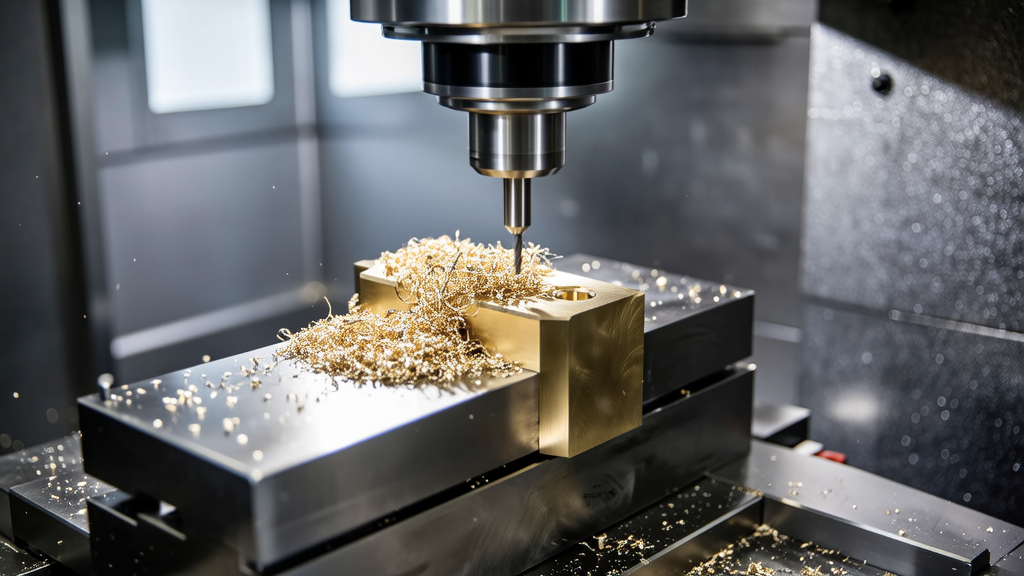The complexities of aluminum machining often present challenges that can compromise accuracy. Factors such as tooling, machine calibration, and operator skill all influence the final product. Therefore, understanding the intricacies of precision standards becomes essential for manufacturers striving for excellence. We discuss several key standards that are widely recognized in the industry and illustrate their practical implications through real-world examples.
Additionally, we highlight the importance of continuous monitoring and quality control during the machining process, emphasizing how proactive measures can prevent inaccuracies. By aligning operations with established precision standards, companies can not only boost the reliability of their products but also gain a competitive edge in the marketplace.
Whether you are a seasoned professional or new to CNC machining, this article will equip you with valuable insights about maintaining dimensional accuracy. Discover how to elevate your machining practices and ensure that your aluminum products meet the highest quality standards. Join us as we navigate the intersection of precision precision standards and excellence in aluminum machining.
Do precision standards ensure dimensional accuracy in aluminum machining? Absolutely, they play a crucial role! When it comes to CNC machining, adhering to precision standards is essential for achieving the required dimensional accuracy. Let’s dive into how this works.
Understanding Key Precision Standards
First off, what are precision standards? Think of them as the guidelines and benchmarks that manufacturers follow to ensure products meet specific accuracy requirements. In aluminum machining, standards like ISO 2768 facilitate a more reliable manufacturing process by defining tolerances for linear dimensions and angular dimensions. This means, for instance, that when a part is designed with a dimension of 100 mm, the actual measurement should fall within a defined range, ensuring that all parts fit together as intended.
Ensuring Accuracy through Calibration
A significant factor in maintaining dimensional accuracy is the calibration of machines. Proper calibration ensures that the CNC machines are producing parts exactly as specified. For example, if a machine is improperly calibrated, the dimensions of the machined product may be off, leading to costly errors and delays. Regular checks and adjustments based on the precision standards help maintain machine accuracy over time.
Quality Control Processes
Quality control plays a vital role in ensuring that the accuracy standards are met. Implementing robust quality assurance processes, such as using coordinate measuring machines (CMMs), allows manufacturers to inspect parts at various stages of production. These instruments compare the actual part dimensions against the theoretical design specifications. Any deviations can be identified early, which helps in taking corrective actions before the parts move further along the production line.
The Role of Skilled Operators
While standards are essential, the role of skilled operators cannot be overlooked. Their experience contributes significantly to achieving dimensional accuracy. Trained operators are familiar with the machinery and can identify potential issues before they result in defects. They also ensure that the machining processes follow the precision standards outlined for the specific materials being used.
Conclusion
In conclusion, precision standards significantly influence dimensional accuracy in aluminum machining. By adhering to these standards, performing regular machine calibrations, implementing stringent quality control processes, and relying on skilled operators, manufacturers can produce high-quality, dimensionally accurate aluminum components. So, if you’re involved in aluminum machining, aligning your practices with established precision standards isn’t just beneficial—it’s essential for success in today’s competitive market.

What are precision standards in aluminum machining?
Precision standards refer to the established guidelines and benchmarks that manufacturers follow to ensure dimensional accuracy. They dictate the acceptable tolerances for various dimensions, ensuring consistency and alignment with design specifications.
Common standards like ISO 2768 help manufacturers define linear and angular tolerances in their designs, which ultimately aids in the reliable production of aluminum components.
How does machine calibration impact dimensional accuracy?
Calibration is critical for maintaining dimensional accuracy in CNC machining. If a machine is out of calibration, it can produce parts that deviate from the intended specifications, leading to inconsistencies.
Regular calibration checks and adjustments help ensure that the machines are operating within the defined accuracy ranges, which is key for producing high-quality aluminum products.
What role does quality control play in ensuring dimensional accuracy?
Quality control involves systematic processes to inspect and monitor production stages. By using tools like coordinate measuring machines (CMMs), manufacturers can compare finished parts to their theoretical designs, catching any deviations early on.
This proactive approach not only prevents defects but also aligns with precision standards, enhancing the overall quality of the aluminum machining process.
Why is operator skill important in achieving accuracy?
Skilled operators play a vital role in maintaining dimensional accuracy. Their expertise allows them to recognize issues that could affect the machining outcome before production errors occur.
Trained personnel are essential for following precision standards closely and ensuring that the machinery is operated correctly to meet the required specifications.









